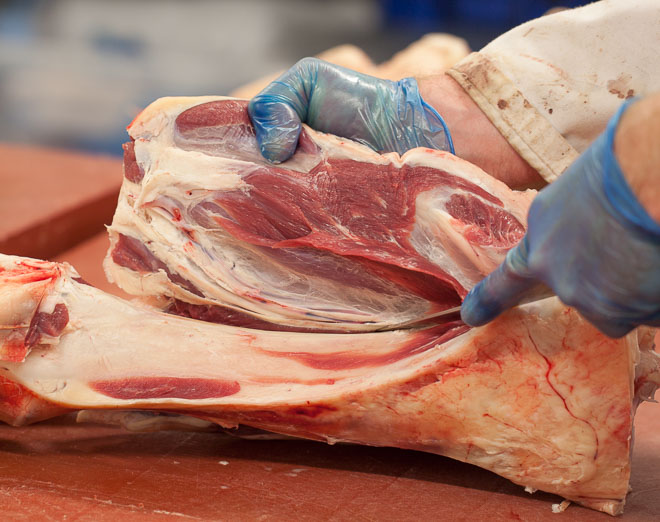Neck
This meat is diced into stewing steak. Best cooked long and slow to release the rich flavour and the juices make rich tasty gravy!
Chuck & Blade
These cuts are from the shoulder in the forequarter and are muscles that work quite hard during the animal’s life, which means they can be tougher than other cuts. A little more tender than the neck, we use these cuts for our braising steaks. These tasty cuts need a longer cooking time to break down the tough muscle fibres, so it works well in casseroles, stews and pies. The flat iron steak is also cut from the shoulder. The flat iron steak has intense flavour is surprisingly tender considering it is cut from the forequarter.
Fore Rib
The rib can be cut and rolled, French-trimmed or left on the bone. The exquisite natural marbling of the rib makes it a rich cut that makes an impressive roast. The rib is also cut into rib-eye steaks.
Sirloin
The sirloin is often regarded as a prime cut. The sirloin is subdivided into the top and bottom sirloin. The top sirloin is cut into steaks – the sirloin steak and also the T-bone. The bottom sirloin is boned and rolled into a classic roasting joint. Along the inside of the loin runs the fillet, a prized cut which is very lean and tender as the muscle is not used much by the animal. The fillet is cut into steaks, chateaubriand and fillet tails.
Rump
This prime cut is full of flavour but is a less expensive cut as it isn’t as tender as sirloin and fillet. Cut into steaks, the flavour of the rump is often preferred over other steaks by many.
Thick Flank, Silverside & Topside
At the top of the back leg, these three cuts are made. The thick flank is referred to as the top rump. All three are lean and make a classic roasting joint. Our joints come with a generous layer of fat tied to them to help baste the meat whilst its cooking.
Brisket
This cut comes from the lower chest and is rolled into a joint. Packed with flavour, the brisket is simple to cook and can be left in the oven for several hours for a rich and tender roast.
Shank or Shin
The shin is the lower part of the animal’s leg. Each side of beef has two shanks, one in the hindquarter and one in the forequarter. Osso Bucco is cut from the shank.
Flank
The flank is located below the loin. The thick flank is also known as the top rump, and the thin flank is known as the skirt. The flank is lean and full of flavour but can be slightly tougher than other cuts.

